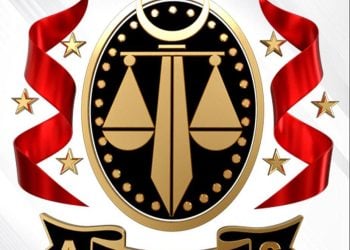By Sami Zaptia:

London, 9 March 2018:
On the regional impact and regional political dynamics, the 157-page UN Experts Panel report noted that ‘‘despite overt international and regional support to the SRSG’s efforts to overcome the political stalemate in Libya, regional polarization has been further driving Libyan actors apart. State-sponsored parallel negotiation tracks and privileged relations between some regional States or organizations and local actors have sometimes marginalized the UN-led efforts.
Involvement of Chadian and Sudanese Armed Groups
The Chadian groups
Chadian armed groups continue to operate in Libya, amidst accusations that some factions are involved in smuggling and have links with jihadist elements.
Three main Chadian groups operate in Libya: the Front pour l’alternance et la concorde au Tchad (FACT), the Conseil du commandement militaire pour le salut de la République (CCMSR) and the Rassemblement des forces pour le changement (RFC). Their involvement in Libya dates back to mid-2014.
The CCMSR, the RFC, and to a lesser extent the FACT, took part in several military confrontations in Libya in 2017. They participated in the BDB-led attack against oil terminals in March 2017, and also in battles in Braq al-Shate’ and Tamanhint in April and May 2017 alongside the Third Force and the BDB.
Chadian groups in Libya numbering between 2,000 and 3,500 fighters are facing important political and military pressures. The retreat of the Third Force, which was the main sponsor of Chadian groups in Libya, from southern Libya and al Jufra in summer 2017 has weakened their position.
The FACT has come under the influence of the LNA and is still in its base in al Jufra. The CCSMR left Sabha on 15 June moving to an oasis in Tebu-controlled territory, some 100 km away of the Chadian border. Around mid-October, three CCSMR commanders were arrested in Niamey, including its leader Mohammad Hassan Bulmay. The RFC, which managed to stay in the area of Sabha, is increasingly divided and solicited to contribute to the fighting by warring Libyan parties.
Unable to return to Chad, these fighters constitute a security challenge in southern and central Libya. Their involvement in military and smuggling activities will continue.
The Sudanese Groups
The LNA provides sustained military and financial support to Sudanese groups, which have extended their areas of operations following the takeover by the LNA of al Jufra and Braq al Shate’. They have been fighting alongside the LNA since March 2015.
To better organize their presence in Libya, Sudanese movements have been trying to unite their forces. On 2 July 2017, the Justice and Equality Movement/Abdallah Jana (Ex-JEM), Sudan Liberation Army/Unity (SLA/Unity) and the Justice and Liberation Movement, decided to merge into one movement, the “Union of Sudan Liberation Forces”. In October 2017, a meeting took place between the Sudan Liberation Movement/Minni Minawi (SLA/MM) and the Union in an attempt to unite all Sudanese groups operating in Libya but this is yet to happen.
The areas of operations of Sudanese groups extended to Tripoli in October 2017. Members of the Union of Sudan Liberation Forces were recruited to move in to Tripoli by al Mabrouk Juma Sultan Hnesih, a former regime army lieutenant. The Panel was already aware of Hnesihs’ role in coordinating the activities of Sudanese groups in the area of Whaw al Namus, on behalf of the LNA.
Hnesih and Imam Daoud (formerly spokesman of SLA/Unit y) were arrested in Zawiyah. They were handed over to the Special Deterrence Force (SDF) in Tripoli on 15 Ocotber 201 7. According to the SDF, Hnesih is affiliated to Saif al Islam al Qadhafi ’s PFLL.
Other Libyan intermediaries are known to the Panel of having coordinated the activities of the Sudanese groups in Libya, such as Hlial Bu Amud Mussa from Zela, Nasser Bni Jredi in Sabha and Ali Sdiini al Kufra and al Sarri areas’’, concluded the UN Experts Panel report on the regional impact on Libya”.







